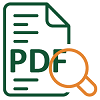At the end of 2021 The European Commission published a draft of the so-called ATAD3 Directive, laying down rules to prevent the misuse of shell entities for tax purposes (the so-called „Unshell” initiative). The Directive is expected to enter into force on January 1, 2024.
PURPOSE OF THE DIRECTIVE
The aim of the Directive is to reduce the tax gap caused by the use of so-called shell entities. The Directive is a continuation of measures aimed at tightening the tax system of the European Union.
Additional reporting obligations and – in certain cases – real tax consequences will be imposed on entities that meet the conditions provided for in the Directive.
SCOPE OF APPLICATION
The directive may affect the structures of international capital groups in which there are holding companies, finance companies or special purpose vehicles that conduct cross-border activities, where the majority of their revenues are the so-called passive income (e.g. dividends, interest or income from real estate).
The provisions will apply to all entities being tax residents in EU member states and qualifying for a certificate of tax residency.
EXCLUSIONS
The so-called low-risk entities will be excluded from the scope of the Directive, including the following: listed companies, collective investment entities or entities being residents in the same Member State as their shareholder or ultimate parent company, as well as entities that have at least five full-time employees or staff members.
IDENTIFICATION OF HIGHER-RISK ENTITIES
For an entity to which exclusions will not apply, it will be first required to determine whether it constitutes a so-called higher-risk entity. This will take place if such entity meets all of the following criteria (the criteria are tested based on the data from two tax years preceding the given year):
- over 75% of the revenue earned by the entity accounted for the so-called relevant income as defined in the Directive (such as interest, dividends, royalties, income from real estate, etc.),
- the entity carried out cross-border activities (i.e. more than 60% of the relevant income of the entity is derived from cross-border transactions or is paid abroad or more than 60% of value of the real estate/movables, being the source of the relevant income, is located outside the country of tax residency),
- the entity has outsourced the management of its day-to-day operations and decision-making processes for essential functions.
ADDITIONAL REPORTING OBLIGATIONS
Entities that meet all of the above criteria will have to prove in the annual tax returns whether they meet the following indicators of a minimum substance:
- whether they own premises or have premises for their exclusive use,
- whether they have at least one active bank account within the European Union,
- whether they have „local” directors or employees.
This information will have to be supported by appropriate documentation, including, i.a., the addresses and types of premises, the amount of revenue, the amount and type of expenses incurred by the entity, the type of activity, the scope of outsourced services or the bank account number.
CONSEQUENCES FOR SHELL COMPANIES
Entities that will not be able to demonstrate the minimum substance will be considered to be shell companies. This will apply to situations where at least one of the above-mentioned substance indicators is not met or the documentation submitted is not deemed sufficient.
The Directive provides for the possibility of rebutting the presumption that an entity is a shell company. However, if this is not the case, the shell company will not be entitled to the benefits arising from double taxation treaties or exemptions under the EU Directives.
HOW TO PREPARE?
To prepare for the new regulations, it is worthwhile now to:
- analyze the activities of entities operating within a group of different tax jurisdictions,
- determine whether they are subject to exemptions provided for in the regulations,
- check whether they pass the tests provided for in the proposed regulations,
- develop a further course of action.
It should be remembered that the final shape of the Directive is not yet known and the proposed regulations may change.
IMPLEMENTATION AND NEXT STEPS
The implementation of the Directive into the legal order of the EU Member States is planned for 2024, but the indicators that will be used to determine whether the entity becomes a so-called higher-risk entity will be verified on the basis of data from the two preceding years, i.e. from as early as 2022.
If you would like to learn more about ATAD3 and analyze the expected impact of the proposed regulations on your business, please contact us.
 Małgorzata Dankowska
Małgorzata Dankowska
Partner, Tax Advisor
malgorzata.dankowska@tpa-group.pl


